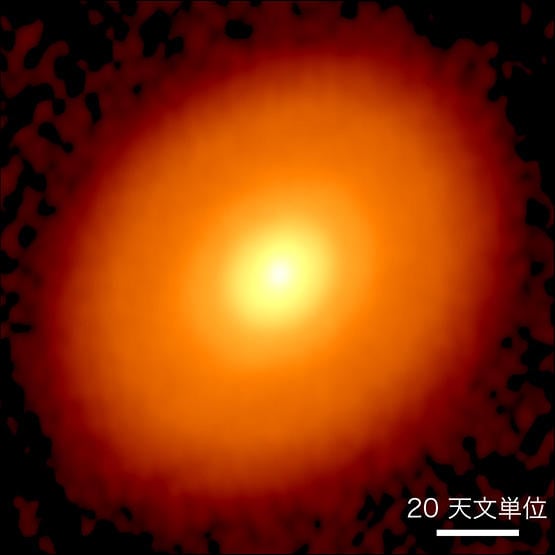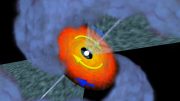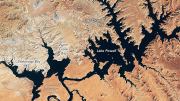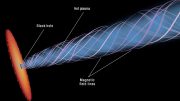
Recent observations of DG Taurus, a young star, reveal a smooth protoplanetary disk with no planet formation yet, suggesting it’s on the verge of this process. Findings show unexpected dust grain growth patterns, providing new insights into early planet formation stages. Credit: SciTechDaily.com
Astronomers have gotten very good at spotting the signs of planet formation around stars. However, to fully grasp planet formation, it’s crucial to examine cases where this process hasn’t begun.
Looking for something and not finding it can be even more difficult than finding it sometimes, but new detailed observations of the young star DG Taurus show that it has a smooth protoplanetary disk without signs of planet formation. This successful non-detection of planet formation may indicate that DG Taurus is on the eve of planet formation.

An image of the radio wave emission strength from the disk around DG Taurus, observed with ALMA. Rings have not yet formed in the disk, suggesting that it is just before planet formation. Credit: ALMA (ESO/NAOJ/NRAO), S. Ohashi et al.
Protoplanetary Disks and Planet Growth
Planets form in disks of gas and dust, known as protoplanetary disks, around protostars, young stars still in the process of forming. Planet growth is so slow that it’s not possible to watch the evolution as it happens, so astronomers observe many protostars at slightly different stages of planet formation to build up a theoretical understanding.
This time an international research team led by Satoshi Ohashi at the National Astronomical Observatory of Japan (NAOJ) used the Atacama Large Millimeter/submillimeter Array (ALMA) to conduct high-resolution observations of a protoplanetary disk around a relatively young protostar, DG Taurus located 410 light-years away in the direction of the constellation Taurus. The team found that DG Taurus has a smooth protoplanetary disk, without any rings which would indicate that planets are forming. This led the team to believe that the DG Taurus system will start forming planets in the future.
Unexpected Findings and Future Research
The team found that in this pre-planet-formation stage, the dust grains within 40 AU (about twice the size of the orbit of Uranus in the Solar System) of the central protostar are still small, while beyond this radius the dust grains have started to grow in size, the first step in planet formation. This is contrary to theoretical expectations that planet formation starts in the inner part of the disk.
These results provide surprising new information about the dust distribution and other conditions at the start of planet formation. Future studies of more examples will further improve our understanding of planet formation.
Reference: “Dust Enrichment and Grain Growth in a Smooth Disk around the DG Tau Protostar Revealed by ALMA Triple Bands Frequency Observations” by Satoshi Ohashi, Munetake Momose, Akimasa Kataoka, Aya E Higuchi, Takashi Tsukagoshi, Takahiro Ueda, Claudio Codella, Linda Podio, Tomoyuki Hanawa, Nami Sakai, Hiroshi Kobayashi, Satoshi Okuzumi and Hidekazu Tanaka, 28 August 2023, The Astrophysical Journal.
DOI: 10.3847/1538-4357/ace9b9
The study was funded by the Japan Society for the Promotion of Science, the Deutsche Forschungsgemeinschaft, and the European Union.









Be the first to comment on "Contradicting Theoretical Expectations – Astronomers Discover First Step Toward Planet Formation"